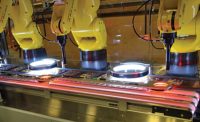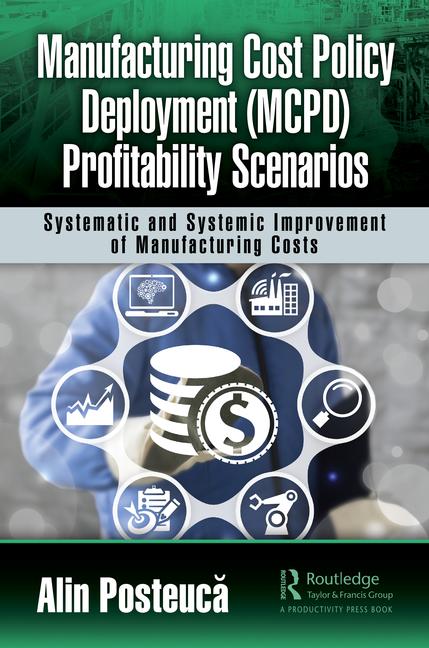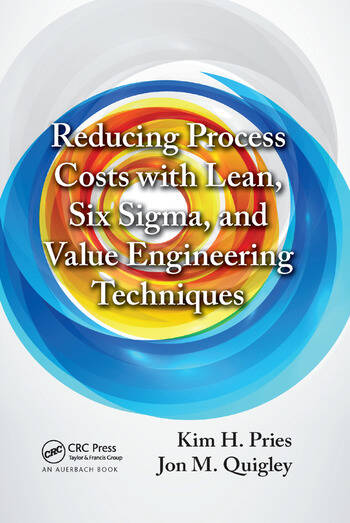
When scaled up in width, conveyors with small-diameter pulleys often cannot carry proportionally greater loads. For example, a conveyor with a pulley diameter of approximately 2 inches, with a correctly tensioned belt, will carry twice the load at 24-inch width that it does at a 12-inch width. This rule of thumb does not hold as pulley diameters approach the 1.25-inch range.
The most critical maintenance points of low-profile conveyors are the belt itself and the pulley and bearing system. Speed, load, accumulation and inclined operation increase forces on these components, as well as the drive system. They also affect belt tension.
Belt manufacturers universally cite correct belt tension and crowned pulleys as the keys to long belt life and consistent slip-free performance with positive self-tracking. Incorrect belt tension is responsible for a high percentage of component-related failures and maintenance costs. Whether overtight or undertight, incorrect belt tension can cause a variety of problems, including bearing overload, mistracking, belt slippage and accelerated component deterioration.
What do belt manufacturers recommend for belt tightness? Correct tension varies, but typically it will be 1 millimeter of belt stretch per foot of conveyor length. However, with allowable manufacturing tolerances on belts, a belt will normally be a little longer or shorter than its stated size. To ensure correct tensioning, a simple system has been developed to allow maintenance people and even novice operators to set correct tension in seconds. The system uses the tail pulley to set tension. Once all belt slack is taken up, tension is set via a scale on each side of the conveyor. Each increment represents the tension setting per foot of conveyor length. It seems counterintuitive, but a belt that is undertensioned can actually elongate in use. If the conveyor has limited tensioning capacity, belts in otherwise good condition end up being discarded.
Belt manufacturers also say that a crowned pulley with a correctly tensioned belt is the preferred way to achieve automatic belt centering. Keep in mind that a crowned pulley is flat across the center, not rounded, so small-product stability on the pulley is not compromised. A crowned pulley produces dual lateral opposing belt forces, which balance each other when the belt is centered over the crown. If the belt moves off center, these lateral opposing forces become unbalanced, resulting in the “higher force” side directing the belt back to its centered position. This action provides virtually wear-free centering. Crowned pulley systems also allow higher accelerations and speeds with much less belt and component wear.
Correctly tensioned belts on crowned pulleys easily withstand moderate short-term lateral forces without major displacement from center. When side loads increase, a V-retainer on the underside of the belt can be added to limit off-center drift. The V-shaped profile rides in a groove cut into the pulleys-which reduces pulley rigidity-and a groove running the length of the conveyor bed. This approach allows the crowned pulley to quickly center the belt when the external force is removed, minimizing wear on the V-retainer.
Belt manufacturers recommend that V-retainers should not be the primary belt-tracking system, due to the high wear the V-profile incurs. If the lateral force is sufficient, the V-retainer will climb out of its groove, and may damage the belt. An alternative is to use the V-retainer on the top edge surface of the belt and have it guided and constrained from the top down by a rolling Delrin V-guide, located opposite the point where the belt experiences side forces. These guides keep the V-profile fully constrained with reduced wear.
A normal V-retainer alone offers no true noncontact guiding, so it tends to drag against the sides of the groove and constantly wear. Another point to consider on a bottom-mounted V-retainer is that the weld used to attach it results in a slight high spot in the middle of the belt, which can be troublesome if the belt carries small products that are prone to tip over. Because of material incompatibilities, the V-profile cannot be used with certain types of belt material, such as silicone, Teflon and polypropylene.

A crowned pulley with a correctly tensioned belt is the preferred way to achieve automatic belt centering. A crowned pulley produces dual lateral opposing belt forces, which balance each other when the belt is centered over the crown.
Pulley Diameter: Size Matters
Low-profile conveyor pulleys normally range from 1 to 2 inches in diameter, but this small range can produce a surprising difference in conveyor capacity and performance, as well as belt, cleat and bearing life. Smaller diameter pulleys may be needed for applications requiring a minimum height profile, where speeds and loads are moderate.However, logic dictates that a smaller-diameter drive pulley will have a much greater tendency to deflect as the conveyor width increases. (A 1.25-inch pulley without a V-groove will deflect nearly five times more than a 1.86-inch pulley with the same load). This creates an inherent “traction” disadvantage for load-carrying purposes, and can negate the belt-centering capability of the pulley. This is highly problematic in applications that involve reversing, wide belts, accumulating or inclined operation. Flexing a belt over a smaller diameter also accelerates the breakdown of the belt structure, leading to erratic operation and shorter life.
When scaled up in width, conveyors with small-diameter pulleys often cannot carry proportionally greater loads. For example, a conveyor with a pulley diameter of approximately 2 inches, with a correctly tensioned belt, will carry twice the load at 24-inch width than it does at a 12-inch width. This rule of thumb does not hold as pulley diameters approach the 1.25-inch range.
Smaller pulley diameters-with their greater tendency to deflect-have limited ability to produce the proper belt tension needed to achieve automatic centering with a crowned pulley. The resulting loss of “traction” and self-centering are sometimes compensated for by lagging or knurling the pulley, and substituting a longitudinal V-retainer, rather than a crowned pulley, for belt centering.
However, because the pulley must now have a V-groove in its center, as well as being knurled, its rigidity is further compromised. Belt manufacturers, too, discourage knurled pulleys because they invariably abrade the underside of the belt and resist tracking, which leads to a substantial reduction in belt life. Impacted debris in the pulley knurl, or worn knurling, can lead to belt slippage and mistracking, as well as accelerated belt, V-retainer and pulley knurl wear. Abrasion can occur without any load on the conveyor, and increases with belt speed. Debris from this abrasion may be unacceptable in food, pharmaceutical or clean-room applications. Routine cleaning of the knurling is impractical because it requires stopping production and removing the belt.
Bearing life is also greatly affected by pulley diameter. A 1-inch diameter pulley must run at twice the speed of a 2-inch diameter pulley to produce an identical belt speed. Small pulley diameters can result in smaller bearings with lower load capacity running at higher speeds, reducing service life. Ensuring that the bearing outer race cannot rotate in the bearing plate housing can improve bearing performance and avoid the need to replace worn bearing housings.
Drives are available in a wide variety of styles. One style that is gaining popularity is the external shaft-mounted design. This unit is compact, provides “perfect alignment” and eliminates couplings, drive belts, chain, sprockets, guards and tensioning. These drives can be radially positioned in 30-degree increments. Mounting of this drive allows an exchange in less than five minutes, when equipped with an optional plug connector.
If a conveyor is used for multiple applications that can be run at lower speeds, a variable-speed drive may be desirable. This reduces wear and power consumption, and provides optimum speed for each application.
The service manual for a conveyor can give clues to potential future issues. Sections on preventive maintenance, and troubleshooting can be enlightening. For example, does the manual recommend stocking spare pulleys, bearings and bearing plates, or disassembling and checking bearings during a belt change or cleaning knurled pulleys? Belt change time should be based on the conveyor in its operating position, not resting on a bench. Manufacturers offer a broad range of options such as cantilever stands, tool-less guide rail removal, belt support removal and belt release that can permit a tool-less “one minute” belt change on a stand mounted conveyor. These options should be reviewed with the manufacturer, especially if downtime is a critical factor.
For more information, call Conveyor Technologies at 513-248-0663 or e-mailtony@conveyortechltd.com.

Backlit conveyors for inspection systems have some unique requirements. The belt cannot use conventional V guiding, so crowned pulleys and proper tension are suggested. Rapid access to the bottom of the belt, conveyor bed surface, and light compartment is crucial. The light compartment should be well-ventilated.
ASSEMBLY Online
For more information on conveyors, visit www.assemblymag.com to read these articles:•Conveyors Take Charge.
•Assembly in Action: Self-Propelled Conveyor Uses RFID.
•AGVs vs. Conveyors.






